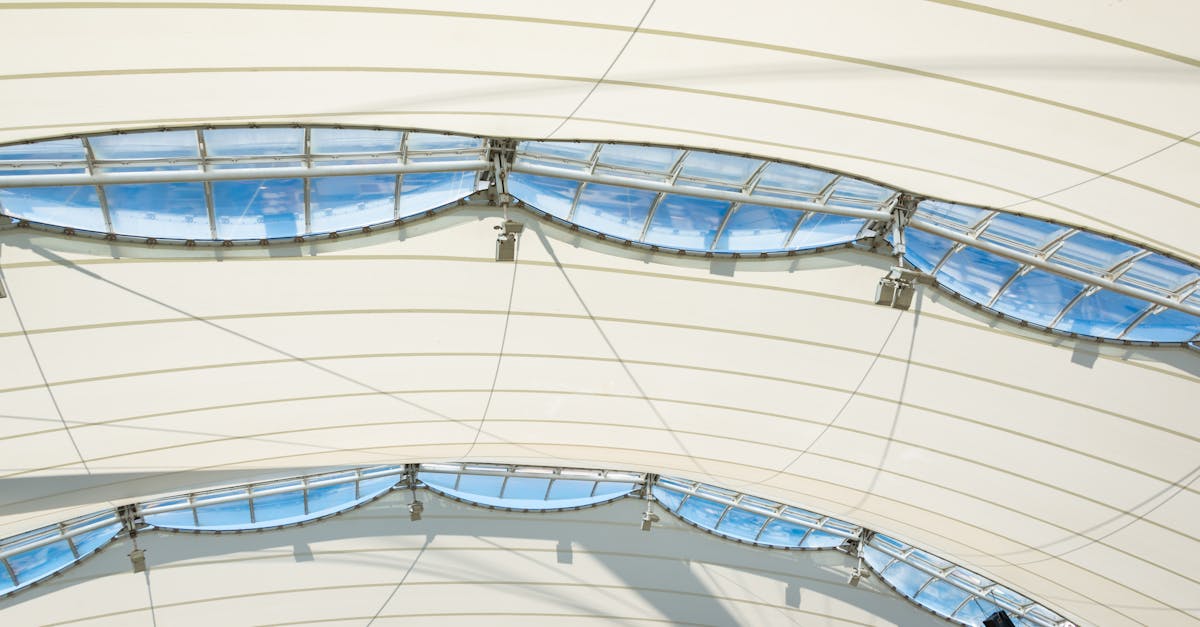How many years do Velux skylights last?

Installation Quality
The quality of installation plays a crucial role in determining the lifespan of Velux skylights. Properly installed skylights minimize the risk of leaks and ensure that the structure is weather-tight. Incorrect installation can lead to a myriad of issues, including water damage, reduced energy efficiency, and premature wear on the skylight itself. Attention to detail during the installation process is essential for maximizing durability and performance.
When skilled professionals handle the installation, they bring knowledge of best practices and local building codes. Their expertise can significantly reduce the risk of common mistakes that inexperienced installers might overlook. Investing in professional installation not only enhances the skylight's functionality but also contributes to its longevity, making it a worthwhile consideration for homeowners.
Impact of Professional Installation
Skylights represent a significant investment in a home, and the quality of installation plays a crucial role in their durability. A professional installer ensures that the skylight is properly sealed and aligned. This minimizes the risks of leaks and drafts, which can compromise the unit's lifespan. Proper installation also aligns the skylight's framing with the home’s existing structure, preventing issues that may arise from improper fit.
Inexperienced installation can lead to numerous problems, such as inadequate insulation and poor drainage. These issues not only reduce the effectiveness of the skylight but can also lead to costly repairs over time. When choosing a skylight, it is essential to consider hiring a qualified professional. This investment in expertise pays off by enhancing the longevity and performance of the skylight.
Climate Considerations
Environmental factors play a significant role in determining the lifespan of Velux skylights. Regions with harsh weather conditions, such as heavy rain, snow, or extreme temperatures, can accelerate wear and tear. The materials used in construction are designed to withstand a variety of climates, but consistent exposure to severe weather can lead to issues like sealant failure or material degradation over time.
Moreover, UV exposure can contribute to the fading and deterioration of both the skylight frame and glazing. Skylights in areas with high sun exposure may experience more frequent maintenance requirements. Homeowners should be mindful of their local climate when installing and maintaining skylights, as this can impact both their longevity and overall performance.
How Weather Conditions Affect Skylight Longevity
Extreme weather can significantly impact the lifespan of Velux skylights. Areas that experience heavy snowfall may face increased stress on the skylight structure due to the weight of accumulated snow. In regions with intense heat and UV radiation, the materials of the skylight can degrade faster, leading to potential leaks or discoloration over time.
Humidity and frequent rain can also play a role in the longevity of the skylights. Excess moisture can lead to mold growth and compromise the sealing around the skylight, which may result in water damage inside the home. Regular maintenance and inspections can help mitigate the effects of these weather-related factors and extend the lifespan of your skylights.
Replacement Options
When a skylight shows signs of wear or damage, homeowners may need to explore replacement options. Various types of skylights are available, including fixed, vented, and tubular designs. Each option offers unique benefits and is suited for different purposes. Selecting the right replacement involves considering energy efficiency, ease of installation, and aesthetic appeal.
In addition to choosing the type of skylight, it's essential to evaluate the materials used in the replacement. Acrylic and polycarbonate can provide significant advantages, such as impact resistance and UV protection. Homeowners should also consider their local climate when selecting materials. Factors like thermal performance and insulation properties will play crucial roles in ensuring that the new skylight will last for years to come.
When to Consider a New Skylight
Several signs indicate it may be time to consider replacing a Velux skylight. Visible damage, such as cracks or leaks, can compromise insulation and lead to energy loss. Over time, seals may degrade, allowing moisture to infiltrate the home, which can lead to mold and further structural concerns. Additionally, fading or discoloration of the skylight could signal that it has exceeded its optimal lifespan, diminishing the aesthetic value of the space.
Another critical factor to assess is energy efficiency. An older skylight may not provide the same insulation as newer models equipped with advanced technology. Homeowners might also notice increased heating or cooling costs, which can indicate that the skylight is no longer performing efficiently. If replacing the skylight can significantly improve energy efficiency and reduce utility bills, it may be a worthwhile investment.
FAQS
How long can I expect my Velux skylights to last?
Velux skylights typically last between 20 to 30 years, depending on various factors such as installation quality and climate conditions.
Does professional installation really make a difference in skylight longevity?
Yes, professional installation can significantly impact the longevity of Velux skylights. Proper installation ensures a better seal and reduces the risk of leaks, which can extend their lifespan.
How do climate conditions affect the lifespan of Velux skylights?
Extreme weather conditions, such as heavy rain, snow, and prolonged sun exposure, can affect the durability of skylights. Areas with harsh climates may see a reduced lifespan compared to milder climates.
What signs indicate that it’s time to replace my Velux skylight?
Common signs that a replacement may be necessary include leaks, condensation buildup, visible damage to the frame or glass, and decreased energy efficiency.
Are there any maintenance tips to help extend the life of my Velux skylights?
Regular maintenance includes cleaning the glass, checking seals for wear, inspecting for any damage, and ensuring proper drainage around the skylight area to prevent water buildup.
Related Links
What's the difference between a skylight and a VELUX?Do Velux skylights qualify for tax credits?